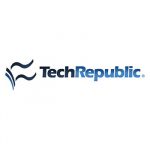
Written by Phara E. McLachlan
For every IT organization, IT asset management (ITAM) is truly a “need to have” these days for reasons including compliance and cost containment. A fundamental part of ITAM is software asset management (SAM). SAM applies to everyone from your regional bank to a Fortune 500 global company. Every organization is using some type of software, and they are also facing the headaches of managing those assets. Guaranteed!
If this is you then here are some simple steps to begin a successful SAM program for your organization:
Discovery – First and foremost, for any SAM program is performing an internal audit to discover what you have. In addition to searching and capturing your assets, you must also collect all copies of proofs of purchase. Sometimes this even means finding the shrink wrap, as these will have codes on them to validate your purchase.
Additionally, you must find and track all receipts, purchase orders, invoices, etcetera, associated with software purchases.
Once you are more aware of what you have, you must match it up with your contract terms and conditions to determine your level of compliance.
For ongoing discovery, many organizations choose to implement one of many available automated tools. Most will not be an out-of-the-box solution, and will need to be customized to fit your needs, but there certainly are some great options for ongoing discovery, and automation will ease the overall process. Others choose to manually discover and track, which is less desirable, but depending on the scope of your software assets, may work for many types of organizations.
Repository – Once you have gone through the arduous process of an internal audit you need to create a repository. This could be an advanced inventory system, or even an excel sheet — whichever works best.
The importance of this repository is for ongoing maintenance. Whenever a new piece of software or user changes or enters the organization, it must be recorded in the repository. The repository should also include your inventory of proofs of purchase, certificates of authenticity and any other paperwork you have associated with your software.
The repository must be reconciled once every six months at the very least. As changes occur with the organization, they must be reflected within your repository. Otherwise, you may end up with improperly assigned or used assets. Very often, the organization will end up paying for assets that aren’t being used.
Lifecycle Management – Lifecycle management is an essential part of a successful SAM program, yet is often the most overlooked.
From procurement to retirement, every asset should be inventoried and evaluated to be sure the asset is living up to its potential (so to speak). If you know the current lifecycle state of an asset at any moment in time you can intelligently plan IT update/replacement, budget, IMAC (install, move, add, change), and procurement activities.
For example, if you know that an asset is available but not assigned, you can manage internal stores and plan inventory levels or identify key assets that are not providing direct value. If you know an asset is ordered but not received, you may need to track a shipment status. If you know that an asset is retired, you can begin physical recovery and disposal activities.
The key to any good SAM program is understanding your contracts, specifically the Terms and Conditions. And first and foremost is the fact that any enterprise should understand is that purchasing software from a software vendor does not mean you own the software. It means you are purchasing the rights to use the software within a certain set of conditions. Keeping this in mind will help keep compliance in mind as well.
Do I have you convinced yet? SAM shouldn’t be an overwhelming task, and when executed correctly, it means cost savings, increased efficiencies and decreased risk both from a financial and security standpoint. With all of these benefits, convincing the c-suite that a successful SAM program is a necessity shouldn’t be a challenge. At the end of the day everyone is looking to save and decrease risk. SAM is certainly the way to go from an IT perspective.
Phara McLachlan is the CEO of Animus Solutions , a management and IT consulting firm she founded in 2004. Phara has more than a decade of management and IT consulting experience with mid-sized to Fortune 500 organizations. She has been recognized as a business leader through awards such as the American Business Awards-Executive of the Year Finalist, Black Enterprise Magazine-Innovator of the Year Finalist, BizTech Judges’ Choice award, and Tampa Bay CEO Magazine-Emerging CEO Finalist. McLachlan is a frequent speaker at industry and community events and is a well-reputed contributor to industry publications such as CIOUpdate.








